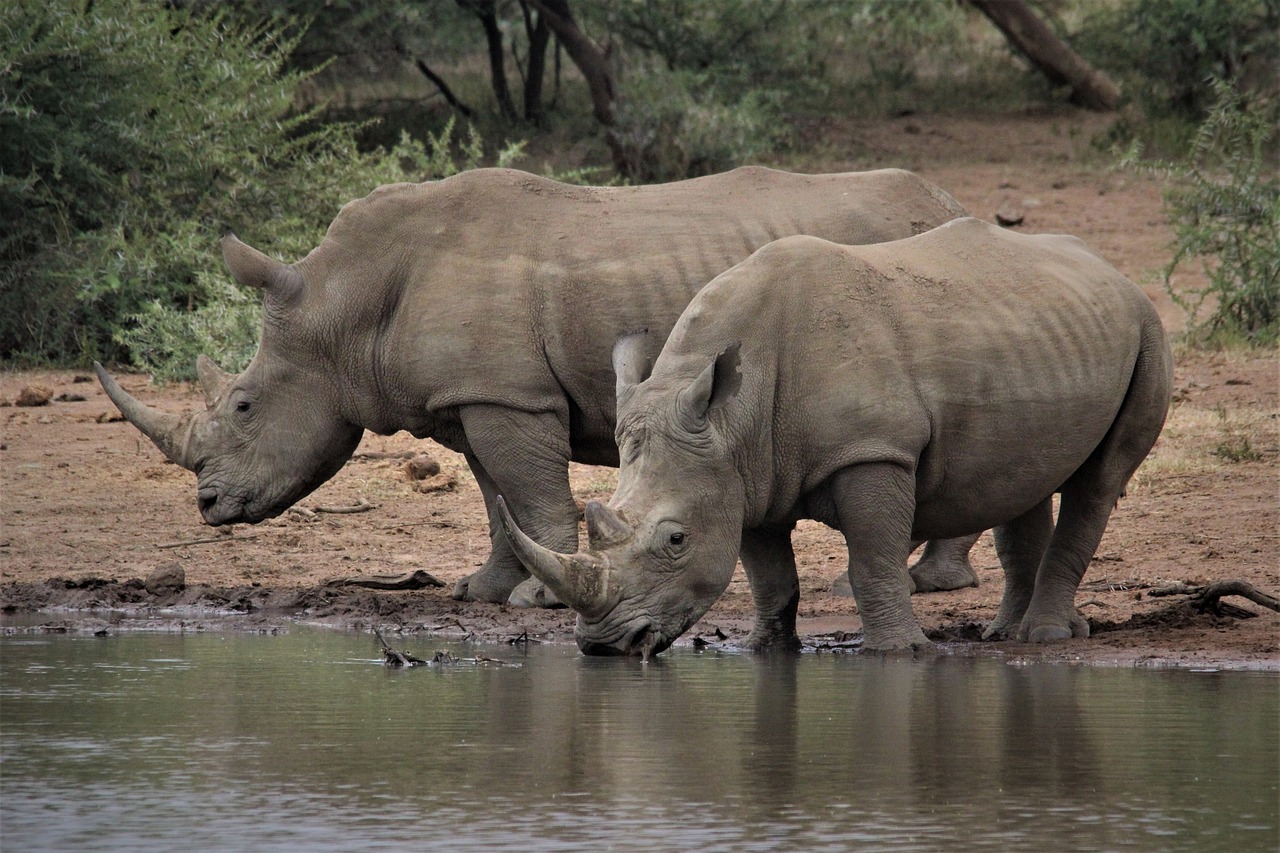Summary of White Rhino Extinction Draws Near, South Africa Plans to Save Them:
The extinction of the white rhino, particularly the northern white rhino subspecies, in the Democratic Republic of the Congo (DRC), has alarmed conservationists and scientists. The extinction was primarily caused by continuous poaching driven by the illegal wildlife trade. South Africa plans to reintroduce the white rhino population in the DRC to prevent further extinction. The southern white rhino subspecies has also seen a significant population decline due to poaching. Despite conservation efforts, poaching for rhino horns, in high demand for traditional Chinese medicine, continues threatening the remaining rhino populations.
*****
Summary:
1. The northern white rhinoceros has become extinct in the wild due to poaching and illegal wildlife trade.
2. South Africa is taking steps to prevent the extinction of the southern white rhinoceros by reintroducing them to the Democratic Republic of the Congo.
3. The southern white rhinoceros population has also decreased recently due to poaching.
4. The cargo plane from South Africa brought eight white rhinos to the Garamba National Park in the DRC.
5. Poaching poses a significant threat to rhinos, driven by the demand for their horns in traditional Chinese medicine.
Saving the White Rhinos: South Africa’s Ambitious Plan to Prevent Extinction
In recent years, the world has witnessed the devastating impact of poaching and illegal wildlife trade on the northern white rhinoceros. This subspecies has become extinct in the wild due to the relentless pursuit of its horns. The loss of the northern white rhino has shocked conservationists and scientists worldwide. However, there is hope on the horizon as South Africa takes steps to prevent the extinction of the southern white rhinoceros. By reintroducing these majestic animals to the Democratic Republic of the Congo, South Africa aims to save this subspecies from a similar fate.
The Decline of the White Rhino Population:
The southern white rhinoceros, the second-largest land mammal on Earth after elephants, has also experienced a significant decline in recent years. According to the International Rhino Foundation, the southern white rhino subspecies population has decreased by almost 12% in the last four years alone. This alarming decline highlights the urgent need for conservation efforts to protect these magnificent creatures.
The Devastating Effects of Poaching:
Poaching has been the primary cause of the decline in white rhino populations. The demand for rhino horns, particularly in traditional Chinese medicine, has fueled the illegal wildlife trade. South Africa, home to most rhinos worldwide, has become a hotspot for poaching. According to Save The Rhino, poachers target white rhinos and other rhino species, further exacerbating their threat of extinction.
South Africa’s Conservation Efforts:
Despite the challenging circumstances, South Africa remains committed to saving the white rhinoceros. In a groundbreaking move, a cargo plane carrying eight white rhinos arrived in the Democratic Republic of the Congo. This ambitious plan aims to reintroduce the endangered species to a nation where it had previously gone extinct. The rhinos were sourced from a South African private reserve, demonstrating the collaborative efforts to protect biodiversity.
The Impact of Rhinoceros Horn Demand:
The demand for rhinoceros horns continues to significantly threaten white rhino populations. Traditional Chinese medicine, in particular, fuels the market for these horns, with many believing in their healing properties. This misconception has led to rampant poaching and the unjust loss of countless rhinos. However, to combat this demand, awareness campaigns and stricter regulations are being implemented to discourage illegal trade and protect these majestic creatures.
The Importance of Conservation:
Conservation is crucial in safeguarding wildlife, particularly endangered species like the white rhinoceros. The reintroduction of these animals to the Democratic Republic of the Congo signifies South Africa’s commitment to biodiversity conservation and instills hope for the future. By raising awareness, implementing effective anti-poaching measures, and promoting sustainable practices, we can ensure the survival of these magnificent creatures for generations to come.
Conclusion:
The imminent extinction of the northern white rhinoceros and the decline of the southern white rhinoceros population are a wake-up call to the urgent need for conservation efforts. South Africa’s plan to reintroduce white rhinos to the Democratic Republic of the Congo represents a significant step towards preventing these subspecies’ extinction. We can work towards a future where these majestic creatures thrive in their natural habitats by addressing the demand for rhinoceros horns, raising awareness, and implementing robust anti-poaching measures. It is up to us to protect and preserve the beauty and diversity of our planet’s wildlife.


